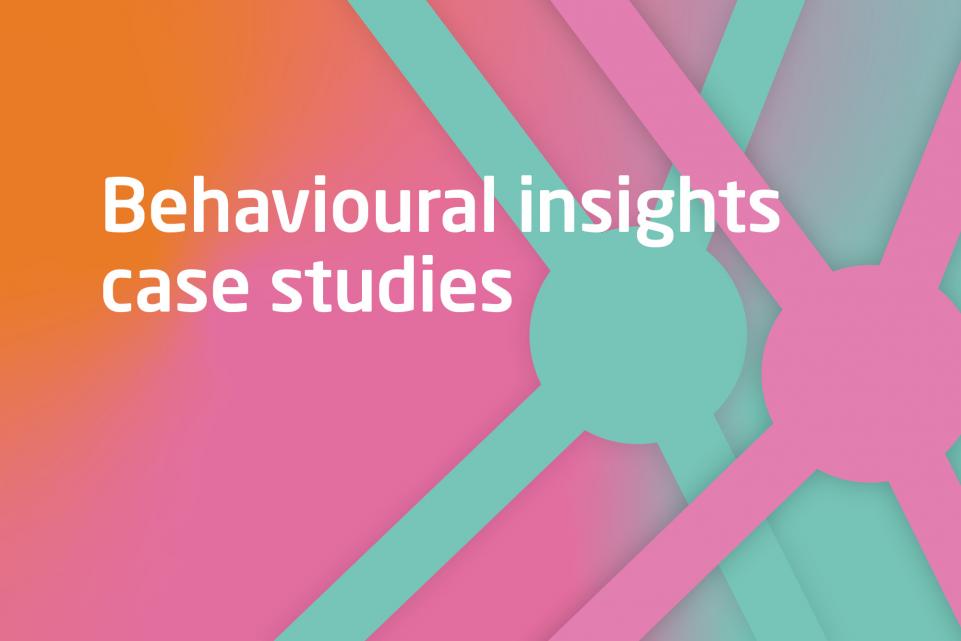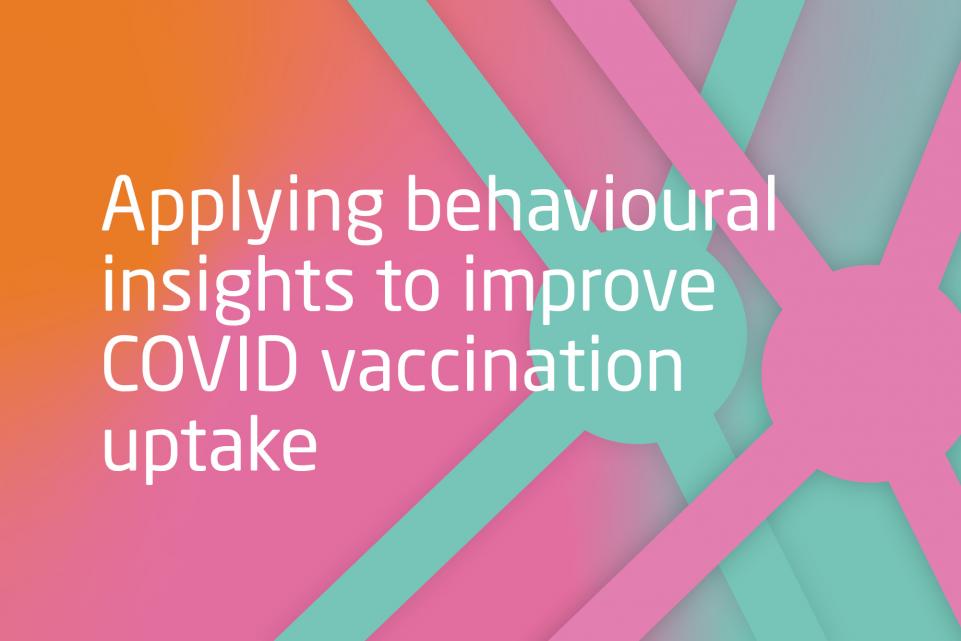Encouraging vaccine take-up is likely to become more challenging as we move through vaccination cohorts, especially when reaching the lowest priority younger generations.
Vaccine hesitancy
Younger generations are more likely to be vaccine hesitant ( (COVID-19 vaccine hesitancy in the UK: the Oxford coronavirus explanations, attitudes, and narratives survey (Oceans) II, Freeman et al., 2021), partly because they perceive themselves to be at lower risk of developing a severe form of COVID-19.
In the section below, we provide a set of behavioural insights that could be relevant when encouraging younger generations to get vaccinated.
Behavioural insights
- Highlight the pro-social benefits of vaccination
- Behavioural Insight: Emphasising the pro-social benefits of vaccination is particularly effective among young people. Prosocial benefits include achieving herd immunity and protecting others, especially those that vulnerables and cannot get vaccinated. Combining both informational and emotional content can be effective (Pfattheicher et al., 2020 ; Betsch et al., 2017).
- Potential application: Focus on prosocial benefits of vaccination in communications tailored to young people
Highlight the importance of getting vaccinated. Provide facts while eliciting empathy towards others.
- Highlight social norms about vaccination
- Behavioural Insight: Highlighting that there are growing intentions to get vaccinated, that most people are getting vaccinated and that they approve doing so, can effectively encourage vaccine take up (Moehring et al., 2021; Palm et al., 2021; Bish et al., 2011; Bavel et al 2020). Since young people tend to be more susceptible to peer influence (Steinberg & Monahan, 2007) , it is likely that social norms can be particularly effective when targeting this group.
- Potential application: Emphasise Social norms in communications targeted towards young people. Make vaccination visible to other young people by setting up vaccination centres in university campuses or schools. Launch an ‘I will get vaccinated’-pledge on social media.
- Highlight the long-term health consequences of COVID-19.
- Behavioural Insight: People are more likely to get vaccinated if they believe COVID-19 is serious and if they believe that they risk contracting it (Brewer et al., 2017; Godinho et al., 2016; Williams et al., 2020).
- Potential application: Since young people are less at risk of developing a lethal form of COVID-19, highlight the potential long-term consequences of the illness.
- Use trustworthy and relatable messengers
- Behavioural Insight: People are influenced by who delivers a message. ‘Soft messengers’ are figures that are influential because they are perceived as similar, relatable and trustworthy (Martin & Marks, 2019).
- Potential application: Use messengers that young people relate to deliver vaccine messages. These, for example, can be social media influencers that are in their age group.
- Make vaccination as easy as possible
- Behavioural Insight: Reducing physical or logistical barriers to vaccination can encourage take-up (Brewer et al., 2017).
- Potential application: Set up vaccination centres in locations that are convenient for young people (e.g. near schools, universities, areas with young demographics).
- Motivate vaccination through financial incentives
- Behavioural Insight: Financial incentives can motivate vaccination, especially for people that perceive the risks of infection as low, such as young people (Bronchetti et al. 2015, Betsch et al., 2015). Financial rewards are considered more acceptable if delivered as vouchers over cash, smaller values over large, and certain rewards as opposed to lotteries (Hoskins et al., 2019). However, be cautious when offering financial incentives as they can undermine people’s intrinsic motivation to get vaccinated (Frey & Jegen, 2002), and could be perceived as a confirmation that vaccination is risky or undesirable.
- Potential application: Invite people to participate in a vaccine take up support programme offering a small reward for receiving both vaccine doses.
Find out how to increase adherence to COVID-19 preventative behaviours among young people.
Featured pages
Three-step guide to encourage COVID-19 vaccinations
Working with The Behaviouralist we have developed a three-step guide to help councils.

COVID-19: Behavioural insights case studies
A series of case studies showing how councils are using behaviour change techniques to increase vaccine uptake and COVID-19 regulation adherence.

Applying behavioural insights to improve COVID vaccination uptake: a guide for councils
This publication focuses on the work councils can undertake to improve vaccine uptake.

